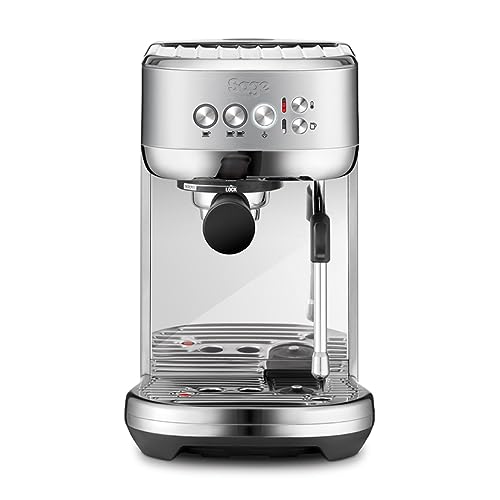How Does Machine Espresso Work?
Machine espresso employs precise pressure and amazing filter technology to make the delicious coffee we enjoy. But how exactly does it work?
To make an espresso, hot water is pushed under pressure through finely ground coffee. The process is similar to making drip coffee however the main difference lies in the pressure.
The Group Head
The group head is the portafilter you place in the espresso maker when making it. It distributes water into the portafilter, and regulates the pressure of extraction. There are a variety of types of group head each with its own advantages and drawbacks. Some focus on temperature stability, some on pre-infusion capabilities, while others are designed to control the lever. There are also some that have a combination of features, such as the E61 that is the most popular choice among baristas due to its capacity to provide multiple benefits in one package.
As you can see in the image above, the group head has many notches in which you can place your portafilter and twist it manually to secure it. A gasket made of rubber is placed within the notches to create a seal when you insert your portafilter. The notches allow for the precise placement of the portafilter. This is vital for an accurate extraction.
The group head does not just allow you to insert your portafilter easily however, it also keeps an even temperature. This is accomplished by cycling hot water around the portafilter, and through the brew-basket, making sure that the temperature is at the right level to extract the coffee. It is crucial to keep in mind that even a few degree deviation can make the difference between a great and a great espresso.
The Pump
Unlike manual piston machines, which rely on a lever to pressurize water, rotary espresso machines rely on motorized pumps that provide the nine atmospheric bars of pressure necessary for espresso extraction. The pressure builds by drawing tap water from a reservoir, and pumping it through a heat exchanger before being pumped through the ground coffee inside the group head.
Pumps are typically less expensive and last for longer than piston-driven machines. However, both kinds of machines can deteriorate because of frequent use and poor cleaning. Pumps are also more complex mechanically, and can add to the price of even the simpler models.
Some espresso machines do away with the pump entirely and use steam pressure to brew espresso. This could lead to over-extraction since the boiler that makes steam also causes the water to boil. The machines also need to constantly rebuild their pressure in between cups. This takes energy and time.
Many espresso machines utilize an rotary or vibrating pump, with a vibrating model using a vibrating disc to create the pressure, and a rotary model pushing hot water through the grounds at high speed. Both machines can produce excellent espresso however rotary machines tend to be quieter, more durable and less likely to fail.
The Boiler
The boiler is the element that heats water to an ideal temperature to extract. The steam that is produced reaches the portafilter that contains ground espresso beans and is then pumped into the cup. During this process, steam creates pressure and pushes through the grounds of the coffee. This creates a foam on the top of the espresso. This is the hallmark of a great espresso.
There are three distinct types of espresso machines, each with distinct pumps and the temperature of the brew. There are a variety of ways in which the brew can be controlled, as well as the size of the cup the maker can create.
The earliest espresso machines were steam types. The first espresso machines were steam-type machines. This resulted in the coffee tasting bitter and burnt. This is the reason why Milanese makers Luigi Bezzerra and Desiderio Pavoni created the modern espresso machine.
The most commonly used espresso maker is a semi-automatic one with an electric pump. When people think of espresso machines , they picture these machines. Semi-automatic machines require you to grind and tamp the beans on your own, but the pump regulates the flow of water and pressure. This is a perfect combination of human control and mechanized reliability.
The Filter
Espresso machines typically use a filter that separates the grounds of the coffee from hot water. The filter is also an essential component of the machine's temp control, as it helps prevent overheating.
Filters also aid in flavor because it allows for a longer flowering period. This lets the beans release their flavor and also allows for better extraction.
However it is crucial to remember that even a great filter can produce a bad cup of coffee, since the quality of the beans and extraction are essential.
It's here that the magic happens. This is the reason why espresso tastes so good. The grouphead (also called the brewhead) is where you put the portafilter, the thingy which you put the grounds of your coffee into when making espresso.
In the steam-driven espresso machine hot water is heated in an airtight container to create steam, which then pushes the hot water through the grounds at high pressure. These machines are less expensive and easier for the owner to maintain than pumps-driven models. They are however limited in their ability for creating the ideal conditions for brewing as they only operate with 1-1.5 bar of pressure. The ideal shot requires 9-10 bars.
In recent years, espresso machines driven by a compressed air compressor have become increasingly popular. They utilize an air compressor to force hot water through the ground, and are more mobile than steam-driven electric espresso machines.

